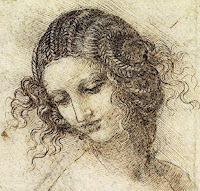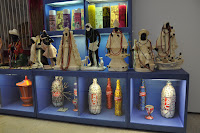I didn't think I'd love this book as much as I did the moment I started reading it but the truth is there were even several ocasions where I did get obsessed with some of Leonardo's sketches, the many that were interspersed in the 291 pages of the book.
Stefan Klein's book "Leonardo's legacy - how Da Vinci reinvented the world" takes us through the many facets of Leonardo's visionary world, the world of the great genius, the inventor, the scientist, the artist and above all the undeniable pioneer of a new world, but the way he does it is particularly intelligent because at no time does the reader get bored.
"Leonardo's legacy tracks the many creations of Da Vinci, and parallels them with key events in Leonardo's life, weaving a tapestry of inventive motivation for the ultimate Renaissance Man, all while posing thought-provoking questions ... the book has some exceptional moments ... it will provide an enjoyable look at the mind of an icon." - San Francisco Book review.
Views of a fetus in the womb - c. 1510-12 (left). Study of brain physiology - c. 1508 (right).
Coition of a hemisected Man and Woman - c. 1492 (right).
Studies of shoulder and neck - c. 1509-10 (left). Design for a flying machine - c. 1488 (right).
Studies of water passing obstacles (left). Old man with water studies - c. 1513 (right).

Five characters in a comic scene - c. 1490 (left.) Study for the head of Leda - c.1505-07 (right).


















































